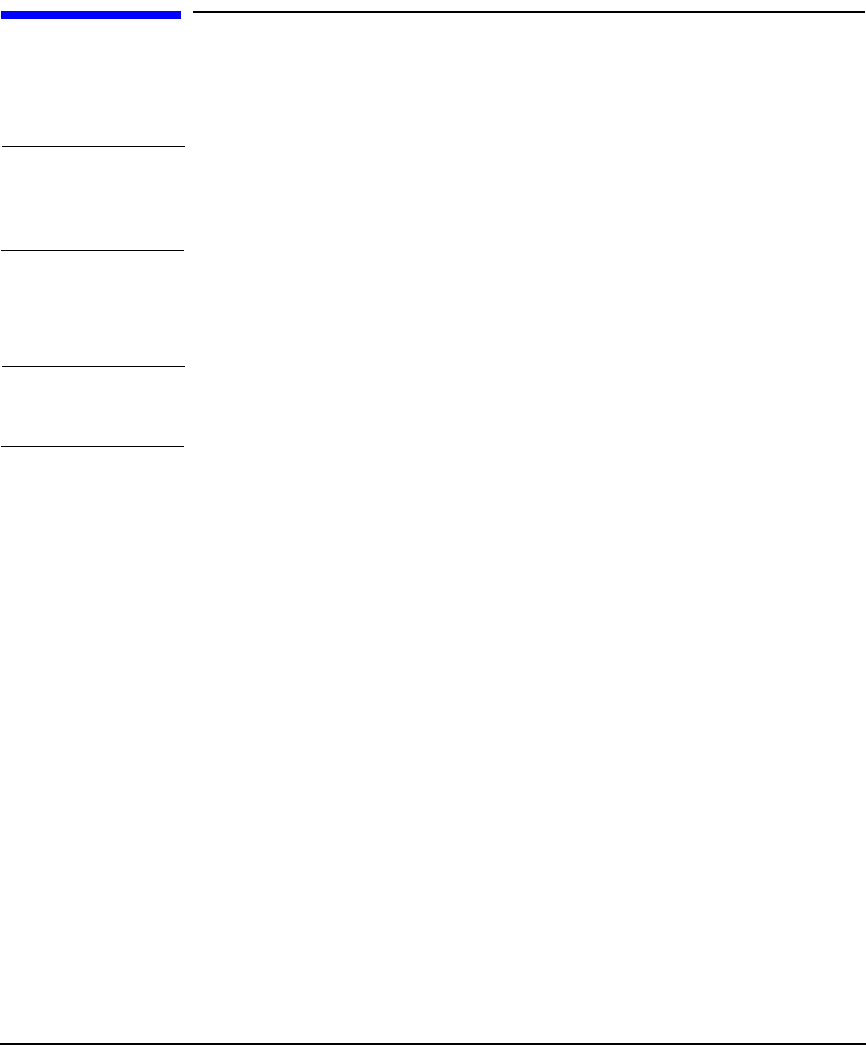HP-UX IPFilter A.03.05.13 Administrator's Guide: HP-UX 11i v3
Table Of Contents
- HP-UX IPFilter Version A.03.05.13 Administrator's Guide
- Legal Notices
- Table of Contents
- Preface: About This Document
- 1 Installing and Configuring HP-UX IPFilter
- Overview of HP-UX IPFilter Installation
- Step 1: Checking HP-UX IPFilter Installation Prerequisites
- Step 2: Loading HP-UX IPFilter Software
- Step 3: Determining the Rules for IPFilter
- Step 4: Adding Rules to the Rules Files
- Step 5: Loading IPFilter and NAT Rules
- Step 6: Verifying the Installation and Configuration
- Kernel Tunable Parameters
- Supported and Unsupported Interfaces
- Troubleshooting HP-UX IPFilter
- 2 HP-UX IPFilter on HP-UX 11i Version 3
- 3 Rules and Keywords
- IPFilter Configuration Files
- Basic Rules Processing
- IPFilter Keywords
- pass and block: Controlling IP Traffic
- in and out: Bidirectional Filtering
- quick: Optimizing IPFilter Rules Processing
- on: Filtering by Network Interfaces
- from and to: Filtering by IP Addresses and Subnets
- log: Tracking Packets on a System
- proto: Controlling Specific Protocols
- opt and ipopts: Filtering on IP Options
- icmp-type: Filtering ICMP Traffic by Type
- port: Filtering on TCP and UDP Ports
- keep state: Protecting TCP, UDP, and ICMP Sessions
- flags: Tight Filtering Based on TCP Header Flags
- keep frags: Letting Fragmented Packets Pass
- with frags: Dropping Fragmented Packets
- with short: Dropping Short Fragments
- return-rst: Responding to Blocked TCP Packets
- return-icmp: Responding to Blocked ICMP Packets
- dup-to: Drop-Safe Logging
- NAT Keywords
- 4 Dynamic Connection Allocation
- 5 Firewall Building Concepts
- Blocking Services by Port Number
- Using Keep State
- Using Keep State with UDP
- Using Keep State with ICMP
- Logging Techniques
- Improving Performance with Rule Groups
- Localhost Filtering
- Using the to
- Creating a Complete Filter by Interface
- Combining IP Address and Network Interface Filtering
- Using Bidirectional Filtering Capabilities
- Using port and proto to Create a Secure Filter
- 6 HP-UX IPFilter Utilities
- 7 HP-UX IPFilter and FTP
- 8 HP-UX IPFilter and RPC
- 9 HP-UX IPFilter and IPSec
- 10 HP-UX IPFilter and Serviceguard
- A HP-UX IPFilter Configuration Examples
- B HP-UX IPFilter Static Linking
- C Performance Guidelines
- Index

HP-UX IPFilter and Serviceguard
Using HP-UX IPFilter with Serviceguard
Chapter 10 137
Using HP-UX IPFilter with Serviceguard
HP-UX IPFilter supports local failover in a Serviceguard environment.
CAUTION NAT functionality is not supported with Serviceguard. Using NAT with
Serviceguard may cause such issues as lost heartbeats, cluster
reformation, and cluster failovers.
Local Failover
NOTE See the Serviceguard documentation for information on configuring a
local failover system in Serviceguard.
IPFilter local failover is transparent to users. Network sessions are not
disrupted during failover or failback.
You do not need to configure any additional rules in IPFilter. When an
interface fails over, the HP-UX IPFilter rules that specify interface
names are automatically changed.
For example, a node in a Serviceguard cluster has a primary interface
named lan0 and a standby interface named lan1. The following rule is
configured for lan0:
pass in on lan0 proto tcp from any to any port = telnet
Upon failover, the rule is automatically modified to:
pass in on lan1 proto tcp from any to any port = telnet
The rule will be changed back automatically on failback.
All rules that filter on interface names are changed at failover and
failback in both the active ruleset and the inactive ruleset. In addition,
logging reflects the changes; the standby interface name will appear in
logs and reports when it is in use.










